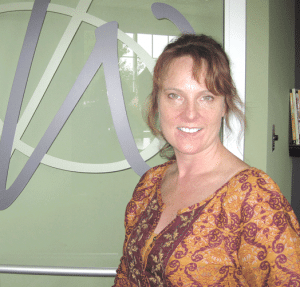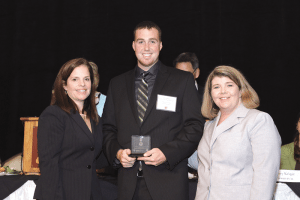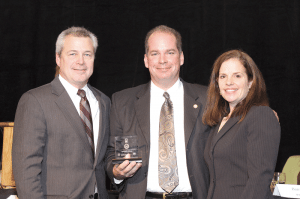The following real estate transactions (latest available) were compiled by Banker & Tradesman and are published as they were received. Only transactions exceeding $115,000 are listed. Buyer and seller fields contain only the first name listed on the deed.
FRANKLIN COUNTY
BERNARDSTON
39 Deacon Parker Road
Bernardston, MA 01337
Amount: $230,000
Buyer: Northfield Mt. Hermon School
Seller: Scott D. Sibley
Date: 09/30/13
BUCKLAND
3 Bray Road
Buckland, MA 01338
Amount: $189,000
Buyer: Brian W. Rice
Seller: Susan E. Geetersloh
Date: 09/30/13
34 Crittenden Hill Road
Buckland, MA 01338
Amount: $687,000
Buyer: Dennis D. Mehiel
Seller: Amy S. Reiser
Date: 09/27/13
CONWAY
896 Graves Road
Conway, MA 01341
Amount: $150,000
Buyer: Marcia P. Lewis
Seller: Peter G. Prudden
Date: 10/04/13
117 Maple St.
Conway, MA 01341
Amount: $238,000
Buyer: William T. Cote
Seller: Doherty INT
Date: 09/27/13
DEERFIELD
5 Eastern Ave.
Deerfield, MA 01373
Amount: $245,000
Buyer: Mark E. Pichette
Seller: Sanicki, James J., (Estate)
Date: 09/27/13
46 McClelland Farm Road
Deerfield, MA 01342
Amount: $319,000
Buyer: Gregory E. Whittier
Seller: Kris N. Warner
Date: 09/30/13
66 North Main St.
Deerfield, MA 01373
Amount: $134,000
Buyer: Lisa B. Middents
Seller: Vladimir Agapov
Date: 09/27/13
ERVING
41 Forest St.
Erving, MA 01344
Amount: $195,000
Buyer: Jeanine M. Dibari
Seller: Jeffrey D. Budine
Date: 10/02/13
GREENFIELD
73 Beacon St.
Greenfield, MA 01301
Amount: $185,000
Buyer: Gerard J. Gualberto
Seller: Chevalier, Mary A., (Estate)
Date: 09/30/13
24 Church St.
Greenfield, MA 01301
Amount: $259,010
Buyer: Eleanor L. Mandell
Seller: Home For Aged People
Date: 09/30/13
85 Harrison Ave.
Greenfield, MA 01301
Amount: $176,000
Buyer: David R. Kox
Seller: Michael H. Merritt
Date: 09/30/13
119 Harrison Ave.
Greenfield, MA 01301
Amount: $115,000
Buyer: Zsuzsana E. Randall
Seller: Shirley E. Renfrew
Date: 09/23/13
15 Lincoln St.
Greenfield, MA 01301
Amount: $127,500
Buyer: Patricia P. Marcus
Seller: John D. Merrigan
Date: 09/23/13
186 Plain Road
Greenfield, MA 01301
Amount: $213,000
Buyer: Joseph R. Charron
Seller: Douglas H. Robinson
Date: 09/30/13
53 Pleasant St.
Greenfield, MA 01376
Amount: $140,040
Buyer: Bank Of New York Mellon
Seller: Felix L. Diaz
Date: 09/30/13
HEATH
33 Town Farm Road
Heath, MA 01346
Amount: $331,500
Buyer: Thomas H. Manley
Seller: John K. Burk
Date: 10/04/13
LEYDEN
19 Stephen Lane
Leyden, MA 01301
Amount: $193,000
Buyer: Priscilla E. Sherman
Seller: Nils E. Bross
Date: 09/23/13
MONTAGUE
46 Davis St.
Montague, MA 01301
Amount: $143,500
Buyer: Christopher L. Bedaw
Seller: Dorothy E. Juskiewicz
Date: 09/25/13
7 Woodland Dr.
Montague, MA 01351
Amount: $160,000
Buyer: Alvah L. Sibley
Seller: FNMA
Date: 10/01/13
NEW SALEM
36 North Main St.
New Salem, MA 01355
Amount: $184,000
Buyer: Cameron H. Dunbar
Seller: Richard C. Castine
Date: 09/25/13
NORTHFIELD
232 Old Vernon Road
Northfield, MA 01360
Amount: $182,500
Buyer: Thomas E. Harrison
Seller: Edmund C. Bassett
Date: 09/27/13
ORANGE
140 Horton Road
Orange, MA 01364
Amount: $150,000
Buyer: Michael P. Gardner
Seller: Peter J. Baribault
Date: 10/02/13
419 Tully Road
Orange, MA 01364
Amount: $176,500
Buyer: Gregory R. McIntyre
Seller: Michael D. Sherar
Date: 10/04/13
SHELBURNE
462 Little Mohawk Road
Shelburne, MA 01370
Amount: $250,000
Buyer: Robert N. Nouryan
Seller: Sayagyi U. Ba Khin Memorial TR
Date: 09/25/13
SUNDERLAND
466 Hadley Road
Sunderland, MA 01375
Amount: $1,499,381
Buyer: Szawlowski Realty Inc.
Seller: S&J Land Trust LLC
Date: 09/25/13
HAMPDEN COUNTY
AGAWAM
6 Althea Circle
Agawam, MA 01001
Amount: $229,900
Buyer: Amy Richards
Seller: Jason A. Rocca
Date: 09/26/13
32 Annable St.
Agawam, MA 01030
Amount: $148,000
Buyer: Arni Atlason
Seller: Colleen A. Shelden-Ferry
Date: 09/27/13
154 Elmar Dr.
Agawam, MA 01030
Amount: $234,000
Buyer: Heather R. Ferreira
Seller: Philip B. Charette
Date: 10/04/13
123 Mallard Circle
Agawam, MA 01001
Amount: $252,000
Buyer: William E. Bunnell
Seller: Donna L. Montagna
Date: 09/27/13
229 North St.
Agawam, MA 01030
Amount: $161,000
Buyer: Jerome L. Luke
Seller: Davilli, Faustino V., (Estate)
Date: 10/01/13
632 North St.
Agawam, MA 01030
Amount: $342,000
Buyer: Rudolph J. Gay
Seller: Carol E. Chatman
Date: 09/30/13
50 Primrose Lane
Agawam, MA 01001
Amount: $166,000
Buyer: Francis A. Connor
Seller: Gilbert D. Olivares
Date: 10/04/13
32 Redwood Dr.
Agawam, MA 01001
Amount: $227,000
Buyer: Sarah Morris
Seller: Amy Kowarsky
Date: 09/25/13
177 River Road
Agawam, MA 01001
Amount: $178,000
Buyer: Jonnie M. Starnes
Seller: Oak Ridge Custom Home Builders
Date: 09/26/13
92 Royal St.
Agawam, MA 01001
Amount: $190,000
Buyer: Ruslan Kuzmenko
Seller: Robert J. Hagberg
Date: 09/23/13
520 School St.
Agawam, MA 01001
Amount: $275,000
Buyer: Kevin B. Tos
Seller: Siarhei Siarheyev
Date: 09/23/13
274 Silver St.
Agawam, MA 01001
Amount: $150,000
Buyer: Jeremy R. Rodier
Seller: Preston F. Perreault
Date: 09/27/13
519 Southwick St.
Agawam, MA 01030
Amount: $213,500
Buyer: Stephanie A. Lees
Seller: Jason R. Bessette
Date: 09/30/13
603 Suffield St.
Agawam, MA 01001
Amount: $165,000
Buyer: Artem Artemov
Seller: Alma J. Cortez
Date: 09/30/13
BRIMFIELD
280 Little Alum Road
Brimfield, MA 01010
Amount: $150,000
Buyer: Adam R. Ingram
Seller: Karen A. Davis
Date: 09/27/13
N/A
Brimfield, MA 01010
Amount: $138,500
Buyer: Timothy R. Walder
Seller: Stearns, James C. Sr., (Estate)
Date: 09/27/13
CHESTER
375 Middlefield Road
Chester, MA 01011
Amount: $140,000
Buyer: Mark A. Hynes
Date: 09/27/13
160 Skyline Trail
Chester, MA 01011
Amount: $288,000
Buyer: Keith Hall
Seller: Christopher West
Date: 09/30/13
CHICOPEE
17 8th Ave.
Chicopee, MA 01020
Amount: $170,000
Buyer: William B. Vanzandt
Seller: Jeanne Y. Ruell
Date: 09/26/13
107 7th Ave.
Chicopee, MA 01020
Amount: $185,000
Buyer: Spencer R. Hart
Seller: Derick B. Lamoureux
Date: 09/30/13
34 Baltic Ave.
Chicopee, MA 01020
Amount: $173,000
Buyer: Carlos J. Delgado
Seller: Robert P. Langevin
Date: 09/23/13
56 Billings St.
Chicopee, MA 01013
Amount: $146,000
Buyer: Christian McCoy
Seller: Doris M. Stewart
Date: 09/30/13
24 Blanchard St.
Chicopee, MA 01020
Amount: $126,000
Buyer: Andrew M. Chagnon
Seller: Mary A. Duguay
4 Burton St.
Chicopee, MA 01013
Amount: $283,609
Buyer: Federal Management Center
Seller: Vesper Gibbs-Barnes
Date: 10/02/13
163 Delaney Ave.
Chicopee, MA 01013
Amount: $181,000
Buyer: Amy A. Kowal
Seller: Richard A. Holmes
Date: 09/27/13
17 Factory St.
Chicopee, MA 01013
Amount: $185,073
Buyer: USA HUD
Seller: Mark T. Sells
Date: 09/27/13
68 Factory St.
Chicopee, MA 01013
Amount: $162,000
Buyer: Robert R. Mercer
Seller: Marie T. Appleby
Date: 09/27/13
6 Glenwood St.
Chicopee, MA 01013
Amount: $154,000
Buyer: Alyssa A. Demers
Seller: Joseph Laliberte
Date: 09/30/13
217 Grattan St.
Chicopee, MA 01020
Amount: $180,000
Buyer: FAB Holdings LLC
Seller: Philip L. Beaulieu
Date: 09/30/13
35 Linden St.
Chicopee, MA 01020
Amount: $160,000
Buyer: Justin D. Delonge
Seller: Chicopee Neighborhood Development
Date: 09/27/13
124 Marten St.
Chicopee, MA 01020
Amount: $182,000
Buyer: Paul C. Grace
Seller: Francis J. Schillinger
Date: 10/03/13
792 McKinstry Ave.
Chicopee, MA 01020
Amount: $164,000
Buyer: Karen L. Watts
Seller: Geoffrey C. Gagnon
Date: 09/30/13
78 Old Lyman Road
Chicopee, MA 01020
Amount: $268,000
Buyer: Michael J. Dean
Seller: Daniel P. Stamborski
Date: 09/30/13
114 Rimmon Ave.
Chicopee, MA 01013
Amount: $129,000
Buyer: Nathan P. Hudon
Seller: Walter S. Urbanek
Date: 09/27/13
140 Trilby Ave.
Chicopee, MA 01020
Amount: $170,000
Buyer: Travis J. Raby
Seller: Claire C. Zacharie
Date: 09/30/13
EAST LONGMEADOW
12 Dale St.
East Longmeadow, MA 01028
Amount: $300,000
Buyer: Debora A. Lavelli
Seller: Raffaele S. Carrano
Date: 09/30/13
Denslow Road
East Longmeadow, MA 01028
Amount: $950,000
Buyer: Bay Path College
Seller: WLF Realty LLC
Date: 09/27/13
12 Pilgrim Road
East Longmeadow, MA 01028
Amount: $300,000
Buyer: David Behnk
Seller: Thomas M. Dodge
Date: 09/30/13
217 Porter Road
Amount: $345,000
Buyer: Edward F. Prendergast
Seller: Paul J. Mercieri
Date: 09/27/13
1 Redin Lane
East Longmeadow, MA 01028
Amount: $194,000
Buyer: Seyedmehdi Sehbarader
Seller: Emmett W. Reardon
Date: 09/25/13
5 Roderick Ave.
East Longmeadow, MA 01028
Amount: $287,500
Buyer: Loan Nguyen
Seller: Deborah A. Ainsworth
Date: 10/01/13
54 South Brook Road
East Longmeadow, MA 01028
Amount: $410,000
Buyer: Ryan McCarthy
Seller: John F. Sullivan
Date: 09/25/13
83 Waterman Ave.
East Longmeadow, MA 01028
Amount: $299,900
Buyer: Jennifer M. Territo
Seller: Vincenzo R. Amore
Date: 09/27/13
110 Westwood Ave.
East Longmeadow, MA 01028
Amount: $142,299
Buyer: Twinbrook Associates LLC
Seller: US Bank
Date: 10/04/13
271 Westwood Ave.
East Longmeadow, MA 01028
Amount: $283,000
Buyer: Antonios C. Jannakas
Seller: Shelley L. Pim
Date: 10/01/13
GRANVILLE
123 Barnard Road
Granville, MA 01034
Amount: $655,000
Buyer: Paul Mayer
Seller: Robert Connelly
Date: 10/04/13
HAMPDEN
36 Crestwood Lane
Hampden, MA 01036
Amount: $203,000
Buyer: Christopher Lanzoni
Seller: Jason D. Christofori
Date: 10/02/13
23 Fernwood Dr.
Hampden, MA 01036
Amount: $260,000
Buyer: Ashlee M. Deziel
Seller: David J. Rock
Date: 09/30/13
50 Martin Farms Road
Hampden, MA 01036
Amount: $229,500
Buyer: Sharon A. Woodwin
Seller: Craig A. Krejci
Date: 09/30/13
187 Sessions Dr.
Hampden, MA 01036
Amount: $226,500
Buyer: Marlenne Rivera
Seller: Patricia R. Waskiewicz
Date: 09/30/13
HOLLAND
2 Fenton St.
Holland, MA 01521
Amount: $125,000
Buyer: Donald Boutin
Seller: David C. Silbor
Date: 09/30/13
34 Leno Road
Holland, MA 01521
Amount: $175,000
Buyer: Nicholas C. Ellsworth
Seller: Eric Perez
Date: 09/30/13
25 Stony Hill Road
Holland, MA 01521
Amount: $159,900
Buyer: Bradley S. Sherrod
Seller: Jonathan D. Mason
Date: 09/30/13
57 Sturbridge Road
Holland, MA 01521
Amount: $177,000
Buyer: Jordan R. Vallon
Seller: Matthew A. Pooler
Date: 09/30/13
HOLYOKE
114 Allyn St.
Holyoke, MA 01040
Amount: $135,000
Buyer: Katherine M. Hall
Seller: Hilda M. Kotfila
Date: 09/26/13
34 Bassett Road
Holyoke, MA 01040
Amount: $225,000
Buyer: Donald W. Miner
Seller: William C. Riley
Date: 09/30/13
11 Belvidere Ave.
Holyoke, MA 01040
Amount: $161,900
Buyer: Shawn R. Croake
Seller: Edward J. Rondeau
Date: 10/01/13
22 Bemis Road
Holyoke, MA 01040
Amount: $244,900
Buyer: Robert Zucker
Seller: Margaret Vezina
Date: 09/25/13
133 Brown Ave.
Holyoke, MA 01040
Amount: $207,000
Buyer: A-Z Property Mgmt. LLC
Seller: Joshua G. Lynn
Date: 10/01/13
158 Dartmouth St.
Holyoke, MA 01040
Amount: $275,000
Buyer: Daniel S. Kates
Seller: James F. McDonough
Date: 09/27/13
81 Edbert Dr.
Holyoke, MA 01040
Amount: $155,360
Buyer: Christopher J. Dautel
Seller: Joseph A. Rivera
Date: 09/25/13
26 Edward Dr.
Holyoke, MA 01040
Amount: $150,000
Buyer: Corrie A. Houle
Seller: Minerva Alvarez
Date: 09/24/13
29 Fenton St.
Holyoke, MA 01040
Amount: $164,000
Buyer: Angel M. Cruz
Seller: James P. Fenton
Date: 09/26/13
4 Irving St.
Holyoke, MA 01040
Amount: $204,000
Buyer: Kirstin R. Kay
Seller: Jeanne L. Lippman
Date: 09/27/13
1548 Northampton St.
Holyoke, MA 01040
Amount: $295,000
Buyer: ES Residential LLC
Seller: John Sutter
Date: 10/03/13
1863 Northampton St.
Holyoke, MA 01040
Amount: $150,820
Seller: Gregory J. Fox
Date: 09/30/13
23 Washington Ave.
Holyoke, MA 01040
Amount: $186,500
Buyer: Avraham A. Harris
Seller: Christine Callahan
Date: 09/27/13
1 Western View Road
Holyoke, MA 01040
Amount: $182,000
Buyer: April Choiniere
Seller: John J. Ferriter
Date: 09/26/13
LONGMEADOW
75 Brooks Road
Longmeadow, MA 01106
Amount: $335,500
Buyer: Steven E. Rovithis
Seller: Bernadette J. Weitz
Date: 09/24/13
67 East Greenwich Road
Longmeadow, MA 01106
Amount: $725,000
Buyer: Edward Feldmann
Seller: Paul G. Chiampa
Date: 09/30/13
156 Green Hill Road
Longmeadow, MA 01106
Amount: $545,000
Buyer: Michael W. Shea
Seller: Therese B. Lapierre
Date: 09/27/13
17 Highland St.
Longmeadow, MA 01106
Amount: $330,000
Buyer: Matthew P. Wranovix
Seller: Harriet A. Fortin
Date: 09/25/13
483 Inverness Lane
Longmeadow, MA 01106
Amount: $385,000
Buyer: Christopher J. Denmark
Seller: Debora A. Lavelli
Date: 09/30/13
523 Laurel St.
Longmeadow, MA 01106
Amount: $271,500
Buyer: Thomas M. Libbos
Seller: Andrew Dzierzgowski
Date: 09/23/13
11 Maple Ter.
Longmeadow, MA 01106
Amount: $235,000
Buyer: Helen C. Gouzounis
Seller: David H. Cosgriff
Date: 09/30/13
28 Oak Hollow Dr.
Longmeadow, MA 01106
Amount: $380,000
Buyer: Peter D. Cherichetti
Seller: Gregory I. Halpern
Date: 10/01/13
24 Salem Road
Longmeadow, MA 01106
Amount: $513,000
Buyer: Gregory I. Halpern
Seller: Richard S. Bell
Date: 10/01/13
107 Viscount Road
Longmeadow, MA 01106
Amount: $435,000
Buyer: Daniel C. Petersen
Seller: Jorge E. Silva
Date: 09/24/13
LUDLOW
34 Alvin St.
Ludlow, MA 01056
Amount: $146,000
Buyer: Elba G. Pires
Seller: Susan C. Sulewski
Date: 09/27/13
42 Beachside Dr.
Ludlow, MA 01056
Amount: $210,000
Buyer: Denise C. Golinski
Seller: Harvey A. Savoie
Date: 10/04/13
92 Chapin St.
Ludlow, MA 01056
Amount: $240,000
Buyer: Rafael A. Silva
Seller: Kevin V. Maltby
Date: 10/03/13
125 Church St.
Ludlow, MA 01056
Amount: $186,000
Buyer: Eric S. Bohnet
Seller: Rae C. Stack
Date: 09/25/13
49 Maple St.
Ludlow, MA 01056
Amount: $175,000
Buyer: Brenna M. Dubosh
Seller: Arlindo Valadares
Date: 09/26/13
N/A
Ludlow, MA 01056
Amount: $182,000
Buyer: Ryan Gagne
Seller: Nicholas Morin
Date: 10/04/13
Sunbriar Lane
Ludlow, MA 01056
Amount: $130,000
Buyer: Michael R. Beauregard
Seller: David R. Lavoie
Date: 10/01/13
MONSON
306 Main St.
Monson, MA 01057
Amount: $172,000
Buyer: Floyd W. Fairbanks
Seller: Bruno J. Costa
Date: 09/30/13
80 Upper Hampden Road
Monson, MA 01057
Amount: $254,900
Buyer: Charles L. Hood
Seller: Harold J. Henry
Date: 09/25/13
MONTGOMERY
285 Main Road
Montgomery, MA 01085
Amount: $295,000
Buyer: Laura M. Marino
Seller: Jeffrey M. Defeo
Date: 09/30/13
PALMER
78 Bacon Road
Palmer, MA 01069
Amount: $149,900
Buyer: John Perkins
Seller: William M. Wanat
Date: 10/01/13
57 Elizabeth St.
Palmer, MA 01069
Amount: $232,500
Buyer: Jeremiah Casavant
Seller: Barbara A. Butcher
Date: 09/27/13
4185 High St.
Palmer, MA 01069
Amount: $139,500
Buyer: Jaime Delvalle
Seller: Duane M. Corbin
Date: 10/01/13
3136 Hillside Dr.
Palmer, MA 01069
Amount: $146,000
Buyer: Jason M. Carlow
Seller: HAP Inc.
Date: 10/04/13
117 Longview St.
Palmer, MA 01069
Amount: $219,000
Buyer: Pamela J. Gurney
Seller: Lou A. Grimes
Date: 09/30/13
2010 Overlook Dr.
Palmer, MA 01080
Amount: $193,000
Buyer: James Brothers
Seller: Sharon A. Woodin
Date: 09/30/13
3051 Pine St.
Palmer, MA 01069
Amount: $167,500
Buyer: Michael B. Atwood
Seller: Renee Belleville
Date: 09/30/13
61 Summer St.
Palmer, MA 01069
Amount: $166,556
Buyer: FNMA
Seller: Benjamin A. Cooper
Date: 10/04/13
SOUTHWICK
2 Alcove Road
Southwick, MA 01077
Amount: $570,000
Buyer: Claudia T. Martorell
Seller: Matthew A. Curtis
Date: 09/30/13
3 Birchwood Road
Southwick, MA 01077
Amount: $135,000
Buyer: Eugene J. Whitehead
Seller: Blake, Helen, (Estate)
Date: 09/27/13
2 Falcon Crest
Southwick, MA 01077
Amount: $442,000
Buyer: Jason Rocca
Seller: Randal B. Carlton
Date: 09/26/13
15 Lake Shore Dr.
Southwick, MA 01077
Amount: $129,500
Buyer: Paula Maher
Seller: Joshua G. Lynn
Date: 10/01/13
9 Maple St.
Southwick, MA 01077
Amount: $149,900
Buyer: Jamie L. Garvey
Seller: Amie S. Seibert
Date: 10/01/13
North Pond Road #2
Southwick, MA 01077
Amount: $123,735
Buyer: John R. Parla
Seller: David M. Falbo
Date: 09/26/13
North Pond Road #3
Southwick, MA 01077
Amount: $123,735
Buyer: John R. Parla
Seller: David M. Falbo
Date: 09/26/13
10 Secluded Ridge
Southwick, MA 01077
Amount: $355,000
Buyer: David K. Kruse
Seller: Mary L. Guzik
Date: 09/26/13
49 South Loomis St.
Southwick, MA 01077
Amount: $270,000
Buyer: Kelli M. Higgins
Seller: Michael R. Burns
Date: 10/04/13
109 Summer Dr.
Southwick, MA 01077
Amount: $123,735
Buyer: John R. Parla
Seller: David M. Falbo
Date: 09/26/13
SPRINGFIELD
9 Allen Park Road
Springfield, MA 01118
Amount: $119,900
Buyer: Edwin D. Deberry
Seller: John J. Albano
Date: 09/30/13
25 Arvesta St.
Springfield, MA 01118
Amount: $208,000
Buyer: Gerald M. Foley
Seller: Paul F. Fernands
Date: 09/27/13
31 Balboa Dr.
Springfield, MA 01119
Amount: $132,500
Buyer: Joseph G. Forbes
Seller: Jeffrey Dunlop
Date: 10/04/13
150 Brookdale Dr.
Springfield, MA 01104
Amount: $1,125,000
Buyer: Manufacturers Group LLC
Seller: Berkshire Brookdale LLC
Date: 09/26/13
49 Burnside Terrace
Springfield, MA 01118
Amount: $132,900
Buyer: Katelyn R. Kimball
Seller: Jeanette A. Whittier
Date: 09/30/13
112 Dayton St.
Springfield, MA 01118
Amount: $189,000
Buyer: David Rudder
Seller: Steven C. Wolf
Date: 09/30/13
223 Dayton St.
Springfield, MA 01118
Amount: $152,500
Buyer: Daniel P. Allard
Seller: Marjorie C. McNeill
Date: 09/27/13
84 Denwall Dr.
Springfield, MA 01119
Amount: $118,000
Buyer: Enyoc Investment Properties
Seller: Nancy L. Folk
Date: 09/27/13
132 Dwight Road
Springfield, MA 01108
Amount: $120,000
Buyer: Luis M. Perez
Seller: Ahap LLC
Date: 09/26/13
123 El Paso St.
Springfield, MA 01104
Amount: $124,407
Buyer: FNMA
Seller: Matthew F. Dusseault
Date: 10/02/13
30 Falmouth St.
Springfield, MA 01151
Amount: $127,000
Buyer: Angela L. Martins
Seller: Ana Beleza
Date: 09/26/13
5 Gates Ave.
Springfield, MA 01118
Amount: $220,000
Buyer: Douglas Johnson
Seller: Joyce M. Debose
Date: 10/01/13
301 Gillette Ave.
Springfield, MA 01118
Amount: $138,000
Buyer: Kara Sotolotto
Seller: Kevin M. Dudley
Date: 09/25/13
176 Glenoak Dr.
Springfield, MA 01129
Amount: $147,000
Buyer: James M. McLaughlin
Seller: William J. Lapalm
Date: 10/02/13
105 Hampden St.
Springfield, MA 01151
Amount: $185,000
Buyer: Denise Anghilante
Seller: Shu Cheng
Date: 09/23/13
109 Harmon Ave.
Springfield, MA 01118
Amount: $157,000
Buyer: Joanne G. Costello
Seller: Rafael A. Hernandez
Date: 10/04/13
14 Hartwick St.
Springfield, MA 01108
Amount: $140,000
Buyer: Stephanie N. Cisler
Seller: Stephen Gasco
Date: 09/30/13
14 Herman St.
Springfield, MA 01108
Amount: $119,000
Buyer: Jose Santos
Seller: James W. Fiore
Date: 10/01/13
88 Hickory St.
Springfield, MA 01109
Amount: $1,093,376
Buyer: Springfield College
Seller: Spring Hill Apts. LP
Date: 09/30/13
17 Kosciusko St.
Springfield, MA 01151
Amount: $138,000
Buyer: Timothy J. Ferber
Seller: Cindy C. Santos
Date: 10/04/13
60 Lancaster St.
Springfield, MA 01118
Amount: $135,000
Buyer: Matthew R. Sullivan
Seller: Ashlee M. Deziel
Date: 09/30/13
59 Laurence St.
Springfield, MA 01104
Amount: $135,000
Buyer: Vilai Sivongxai
Seller: USA HUD
Date: 09/23/13
42 Longfellow Ter.
Springfield, MA 01108
Amount: $162,501
Buyer: Household Finance Corp.
Seller: Jacqueline M. Griswold
Date: 09/24/13
3 Los Angeles St.
Springfield, MA 01107
Amount: $178,220
Buyer: FNMA
Seller: Gricelle Santiago
Date: 10/02/13
46 Midway St.
Springfield, MA 01151
Amount: $115,000
Buyer: Jaimie L. Standing
Seller: Robert N. Genander
Date: 10/04/13
41 Montclair St.
Springfield, MA 01104
Amount: $154,000
Buyer: Angel J. Martinez
Seller: James W. Fiore
Date: 10/01/13
17 Notre Dame St. #38
Springfield, MA 01104
Amount: $202,000
Buyer: Charles Stevenson
Seller: Elaine C. Graham
Date: 10/04/13
87 Pennsylvania Ave.
Springfield, MA 01118
Amount: $134,900
Buyer: Narapati Kafley
Seller: Anita L. Reilly
Date: 09/30/13
74 Randall Place
Springfield, MA 01108
Amount: $236,900
Buyer: Randall Seventy Four LLC
Seller: KRM Real Estate LLC
Date: 09/26/13
Shefford St. (SWS) #9
Springfield, MA 01101
Amount: $160,000
Buyer: Lynn A. McAuliffe
Seller: McAuliffe, Pauline R., (Estate)
Date: 10/04/13
115 Signal Hill Circle
Springfield, MA 01118
Amount: $310,000
Buyer: Robin S. Sanchez
Seller: Diane A. Demarco
Date: 10/03/13
51 Sylvan St.
Springfield, MA 01108
Amount: $149,900
Buyer: Luis J. Navarro
Seller: Nguyet Nguyen
Date: 09/25/13
425 Trafton Road
Springfield, MA 01108
Amount: $253,000
Buyer: Lauren E. Fiorentino FT
Seller: Nicole E. Marks
Date: 09/27/13
3 Waterford Circle
Springfield, MA 01129
Amount: $151,000
Buyer: Peter Kelly
Seller: Karen R. Hanson
Date: 09/26/13
206 West Allen Ridge Road
Springfield, MA 01118
Amount: $135,000
Buyer: Hung Giang
Seller: Andrew Thomas
Date: 09/30/13
8 White Birch Dr.
Springfield, MA 01119
Amount: $180,000
Buyer: Jose Serrano
Seller: Martin J. Getchell
Date: 09/30/13
178 Wollaston St.
Springfield, MA 01119
Amount: $189,900
Buyer: Omar J. Yousef
Seller: JV Properties Inc.
Date: 09/25/13
TOLLAND
33 Lands End Dr.
Tolland, MA 01034
Amount: $420,000
Buyer: Peter Girouard
Seller: Hyland, Thomas, (Estate)
Date: 10/03/13
WESTFIELD
33 Adams St.
Westfield, MA 01085
Amount: $152,000
Buyer: George Chapman
Seller: Robert K. Walker
Date: 09/26/13
305 Buck Pond Road
Westfield, MA 01085
Amount: $275,000
Buyer: Laura C. Kellogg
Seller: Paul R. Desrosiers
Date: 09/30/13
315 Buck Pond Road
Westfield, MA 01085
Amount: $275,000
Buyer: Jared M. Longley
Seller: Douglas W. Bishop
Date: 09/30/13
12 Cortez St.
Westfield, MA 01085
Amount: $124,440
Buyer: FNMA
Seller: Melvin R. Perry
Date: 10/04/13
51 Court St.
Westfield, MA 01085
Amount: $218,900
Buyer: Christopher R. Judson
Seller: Pamela Leigh
Date: 09/27/13
10 Forest Ave.
Westfield, MA 01085
Amount: $152,500
Buyer: Sarah C. Sanderson
Seller: Lawrence Borovicka
Date: 09/30/13
59 George St.
Westfield, MA 01085
Amount: $146,000
Buyer: Amy M. Desilets
Seller: Julio Melendez
Date: 10/04/13
32 Harvest Moon Lane
Westfield, MA 01085
Amount: $458,000
Buyer: David A. Carlin
Seller: Steven F. Bertera
Date: 09/30/13
55 Jefferson St.
Westfield, MA 01085
Buyer: William J. Cronin
Seller: Laura Kellogg
Date: 09/30/13
190 Joseph Ave.
Westfield, MA 01085
Amount: $208,900
Buyer: Inna Shvetsova
Seller: Kenneth O. Fuller
Date: 09/30/13
405 Montgomery Road
Westfield, MA 01085
Amount: $375,000
Buyer: Stacey A. Sorawat
Seller: Giberson Construction Inc.
Date: 09/23/13
32 Murray Ave.
Westfield, MA 01085
Amount: $188,000
Buyer: Nicholas R. Redfern
Seller: Kirsten I. Casavant
Date: 09/27/13
118 Old Farm Road
Westfield, MA 01085
Amount: $179,000
Buyer: Diamantis Diamantopoulos
Seller: Robert Barnes
Date: 09/30/13
21 Princeton St.
Westfield, MA 01085
Amount: $152,000
Buyer: Robert Mazeika
Seller: Provident Fund Assocs. LP
Date: 10/01/13
94 Riverside Dr.
Westfield, MA 01085
Amount: $157,000
Buyer: Mark P. Slessler
Seller: David G. Gauthier
Date: 09/27/13
3 Rosedell Dr. Ext.
Westfield, MA 01085
Amount: $243,000
Buyer: Rodrigo D. Mascarenhas
Seller: Jazab LLC
Date: 09/27/13
571 Southampton Road
Westfield, MA 01085
Amount: $475,000
Buyer: Legend Associates LLC
Seller: Michael T. Beal
Date: 10/03/13
341 Springdale Road
Westfield, MA 01085
Amount: $288,000
Buyer: Frank R. Adamski
Seller: Jeffrey M. Litwin
Date: 09/30/13
24 Sunrise Ter.
Westfield, MA 01085
Amount: $121,619
Buyer: USA VA
Seller: Donna J. Miranda
Date: 10/04/13
158 Tannery Road
Westfield, MA 01085
Amount: $232,000
Buyer: Robert W. Chipman
Seller: Daniel J. Seibert
Date: 09/30/13
WEST SPRINGFIELD
21 Almon Ave.
West Springfield, MA 01089
Amount: $169,500
Buyer: Jason A. Caron
Seller: Peter D. Towle
Date: 09/30/13
24 Burke Ave.
West Springfield, MA 01089
Amount: $190,000
Buyer: Yessenia Figueroa
Seller: Jared M. Longley
Date: 09/30/13
270 Ely Ave.
West Springfield, MA 01089
Amount: $222,000
Buyer: Christopher J. Rizzuto
Seller: Patricia Langevin
Date: 09/26/13
189 Hillcrest Ave.
West Springfield, MA 01089
Amount: $149,229
Buyer: FNMA
Seller: James C. Parent
Date: 09/24/13
93 Kings Hwy.
West Springfield, MA 01089
Amount: $154,650
Buyer: Alfred P. Bronner
Seller: James A. Ryan
Date: 10/04/13
322 Main St.
West Springfield, MA 01089
Amount: $175,000
Buyer: Mustafa F. Niyazov
Seller: Filomena R. Larocca
Date: 09/30/13
618 Morgan Road
West Springfield, MA 01089
Amount: $175,000
Buyer: Brett A. Smith
Seller: Robert G. Gordon
Date: 09/26/13
782 Morgan Road
West Springfield, MA 01089
Amount: $152,000
Buyer: Peter E. Mwanansao
Seller: Mary E. Piela
Date: 10/01/13
29 Old Orchard Road
West Springfield, MA 01089
Amount: $189,900
Buyer: Steven A. Bramlett
Seller: Bradford A. Aubin
Date: 10/04/13
15 Piper Road
West Springfield, MA 01089
Amount: $225,000
Buyer: Richard T. Cerrone
Seller: Donald Vachon
Date: 09/27/13
521 Piper Road
West Springfield, MA 01089
Amount: $145,000
Buyer: Daniel A. O’Sullivan
Seller: Michael S. Czepiel
Date: 09/24/13
64 Poplar Ave.
West Springfield, MA 01089
Amount: $165,000
Buyer: Duane H. Mason
Seller: Centracchio, Julia, (Estate)
Date: 09/27/13
92 Prospect Ave.
West Springfield, MA 01089
Amount: $173,000
Buyer: Alexis K. Godden
Seller: Marissa Monti
Date: 10/04/13
130 Prospect Ave.
West Springfield, MA 01089
Amount: $166,000
Buyer: Maryann E. Solomos
Seller: Stephen P. Bartolucci
Date: 09/25/13
56 Woodbrook Ter.
West Springfield, MA 01089
Amount: $337,500
Buyer: John F. Young
Seller: Laura J. Davis
Date: 09/24/13
WILBRAHAM
2350 Boston Road
Wilbraham, MA 01095
Amount: $725,000
Buyer: Baystate Self Storage of Wilbraham
Seller: Mari E. Tarpinian
Date: 10/03/13
100 Faculty St.
Wilbraham, MA 01095
Amount: $312,000
Buyer: Xingluan Cao
Seller: Mark T. Carlson
Date: 09/27/13
15 Hitchcock Road
Wilbraham, MA 01095
Amount: $439,000
Buyer: David Goodrich
Seller: Sheryl L. McQuade
Date: 09/30/13
11 Mcintosh Dr.
Wilbraham, MA 01095
Amount: $374,000
Buyer: Dominic D. Maloni
Seller: Christopher T. Collins
Date: 09/26/13
6 Millbrook Circle
Wilbraham, MA 01095
Amount: $297,500
Buyer: Brandon M. Waskiewicz
Seller: Beth A. Steil
Date: 09/30/13
726 Monson Road
Wilbraham, MA 01095
Amount: $210,000
Buyer: Marc E. Mylonakis
Seller: Rudolph M. Dias
Date: 10/01/13
491 Stony Hill Road
Wilbraham, MA 01095
Amount: $290,000
Buyer: Linda Gates
Seller: Douglas Eldridge
Date: 09/27/13
34 Sunnyside Terrace
Wilbraham, MA 01095
Amount: $275,000
Buyer: Ian G. Kearney
Seller: Stephen M. Caraker
Date: 09/27/13
HAMPSHIRE COUNTY
AMHERST
16 Arbor Way
Amherst, MA 01002
Amount: $433,500
Buyer: Tasmiah P. Chowdhury
Seller: Henry L. Pope
Date: 09/27/13
42 Harris St.
Amherst, MA 01002
Amount: $272,500
Buyer: Irene Nystrom
Seller: Anna M. Sceffey
Date: 09/25/13
41 Hunters Hill Circle
Amherst, MA 01002
Amount: $316,000
Buyer: Sujata R. Konowitz
Seller: Windcatcher RET
Date: 09/27/13
93 High Point Dr.
Amherst, MA 01002
Amount: $339,900
Buyer: Ann C. Kenworthy
Seller: Gayle A. Metevia
Date: 10/04/13
11 Indian Pipe Lane
Amherst, MA 01002
Amount: $390,000
Buyer: Iris Greene
Seller: Honore S. David RT
Date: 09/27/13
Lindenridge Road
Amherst, MA 01002
Amount: $215,000
Buyer: Amy B. Gallant
Seller: Tofino Associates LLC
Date: 10/04/13
30 Sunrise Ave.
Amherst, MA 01002
Amount: $325,311
Buyer: FNMA
Seller: Sally Ann Washburn
Date: 09/25/13
65 Taylor St.
Amherst, MA 01002
Amount: $360,000
Buyer: Jocelyn A. Deangelis
Seller: Andrew J. Glace
Date: 10/04/13
BELCHERTOWN
426 Allen Road
Belchertown, MA 01007
Amount: $125,000
Buyer: Jeremy D. Cushing
Seller: David G. Cushing
Date: 09/25/13
86 Amherst Road
Belchertown, MA 01007
Amount: $249,000
Buyer: Michelle Stewart
Seller: Nerissa C. Hall
Date: 09/26/13
161 Federal St.
Belchertown, MA 01007
Amount: $186,000
Buyer: Marion P. Moreau
Seller: Diane J. Morre
Date: 10/04/13
16 Jackson St.
Belchertown, MA 01007
Amount: $240,000
Buyer: Diane J. Morre
Seller: Richard F. Conrad
Date: 10/04/13
63 Mountain View Dr.
Belchertown, MA 01007
Amount: $425,000
Buyer: Kenneth J. Riley
Seller: Edward J. Sokolowski
Date: 09/26/13
N/A
Belchertown, MA 01007
Amount: $232,000
Buyer: Lurene A. Grenier
Seller: Donald W. Tyrie
Date: 09/26/13
21 Shea Ave.
Belchertown, MA 01007
Amount: $315,000
Buyer: Mark D. Wilkins
Seller: Donald R. Besancon INT
Date: 09/24/13
154 South St.
Belchertown, MA 01007
Amount: $260,000
Buyer: Michael T. Schmidt
Seller: Jacob A. Speaks
Date: 09/24/13
CHESTERFIELD
79 Willicutt Road
Chesterfield, MA 01012
Amount: $170,000
Buyer: Eric A. Gougeon
Seller: Karen Higgins
Date: 10/03/13
CUMMINGTON
1 Swift River Road
Cummington, MA 01026
Amount: $154,000
Buyer: Joshua R. Gamache
Seller: Elizabeth J. Wade
Date: 09/30/13
EASTHAMPTON
2 Autumn Dr.
Easthampton, MA 01027
Amount: $349,900
Buyer: J. A. Fraser-Champagne
Seller: Czelusniak Custom Homes
Date: 10/01/13
8 Bayberry Dr.
Easthampton, MA 01027
Amount: $410,000
Buyer: Lori D. Vaillancourt
Seller: Michael A. Forget
Date: 10/01/13
13 Broad St.
Easthampton, MA 01027
Amount: $227,500
Buyer: Jose A. River
Seller: Krawiec, John, (Estate)
Date: 09/25/13
3 Carillon Circle
Easthampton, MA 01027
Amount: $210,000
Buyer: Bank Of America
Seller: Katherine L. Hruby
Date: 09/23/13
302 East St.
Easthampton, MA 01027
Amount: $285,000
Buyer: Jennifer L. Young
Seller: Chad Alexander
Date: 09/26/13
151 Ferry St.
Easthampton, MA 01027
Amount: $254,000
Buyer: Charles Bobala
Seller: Michael J. Dean
Date: 09/30/13
17 Florence Road
Easthampton, MA 01027
Amount: $172,500
Buyer: Bethany Ryan
Seller: William F. Gruber
Date: 09/30/13
65 Hendrick St.
Easthampton, MA 01027
Amount: $153,000
Buyer: Lisa M. Green
Seller: Lauren A. Burke
Date: 09/24/13
12 Lawson Dr.
Easthampton, MA 01027
Amount: $209,000
Buyer: Richard D. Desimone
Seller: Michael Donnis
Date: 09/26/13
260 Loudville Road
Easthampton, MA 01027
Amount: $262,000
Buyer: Mukund Feldman
Seller: John W. Richardson
Date: 10/02/13
117 Main St.
Easthampton, MA 01027
Amount: $230,000
Buyer: Raymond C. Ledoux
Seller: Karel P. Guardado NT
Date: 09/27/13
144 Main St.
Easthampton, MA 01027
Amount: $350,000
Buyer: Jacob A. Speaks
Seller: Connie S. Going
Date: 09/24/13
18 Oakdale Place
Easthampton, MA 01027
Amount: $140,000
Buyer: Matthew J. Clark
Seller: Deborah A. Kapinos
Date: 09/25/13
44 Oliver St.
Easthampton, MA 01027
Amount: $290,000
Buyer: Deborah L. Barr
Seller: Raymond A. Kelliher
Date: 09/27/13
21 Pinebrook Dr.
Easthampton, MA 01027
Amount: $290,500
Buyer: Chase S. Hunter
Seller: Lori D. Vaillancourt
Date: 10/01/13
18 Pomeroy St.
Easthampton, MA 01027
Amount: $213,000
Buyer: Rachael E. Barber
Seller: Joanne F. Staszko
Date: 09/23/13
6 Truehart Dr.
Easthampton, MA 01027
Amount: $194,000
Buyer: James A. Sturges
Seller: Karen Bolduc
Date: 09/23/13
GOSHEN
105 Ball Road
Goshen, MA 01096
Amount: $174,000
Buyer: Thomas J. Camilleri
Seller: Jan M. Kozloski
Date: 09/27/13
GRANBY
5 Lakeview Ave.
Granby, MA 01033
Amount: $151,000
Buyer: William H. Fournier
Seller: Paul J. Fortier
Date: 09/23/13
HADLEY
206 Middle St.
Hadley, MA 01035
Amount: $375,000
Buyer: David J. Fill
Seller: 63 MKT Realty LLC
Date: 09/30/13
453 River Dr.
Hadley, MA 01035
Amount: $778,119
Buyer: Szawlowski Realty Inc.
Seller: S&J Land Trust LLC
Date: 09/25/13
2 Sylvia Heights
Hadley, MA 01035
Amount: $405,000
Buyer: Valley Building Co. Inc.
Seller: Dorothy T. Ruder
Date: 10/04/13
HATFIELD
6 Pleasant View Dr.
Hatfield, MA 01038
Amount: $289,000
Buyer: Scott M. Cox
Seller: Kovalski, John F., (Estate)
Date: 09/30/13
HUNTINGTON
147 Worthington Road
Huntington, MA 01050
Amount: $197,000
Buyer: Christopher L. Meyerhoff
Seller: Sean M. Brady
Date: 09/27/13
NORTHAMPTON
15 Claire Ave.
Northampton, MA 01062
Amount: $221,000
Buyer: Jennifer A. Daekins
Seller: Choquette, M. A., (Estate)
Date: 09/30/13
47 Dryads Garden
Northampton, MA 01060
Amount: $685,000
Buyer: Adam L. Zucker
Seller: Jay A. Breines
Date: 09/30/13
196 Federal St.
Northampton, MA 01062
Amount: $349,900
Buyer: Paul E. Gulla
Seller: David Kherdian
Date: 09/30/13
200 Federal St.
Northampton, MA 01062
Amount: $415,000
Buyer: James V. White
Seller: Joan Barberich
Date: 09/27/13
49 Gothic St.
Northampton, MA 01060
Amount: $475,000
Buyer: Tragin Properties LLC
Seller: Lori Morgan
Date: 09/30/13
37 Henshaw Ave.
Northampton, MA 01060
Amount: $645,000
Buyer: Mary J. Prince
Seller: Thomas P. Lesley QPRT
Date: 09/27/13
90 Moser St.
Northampton, MA 01060
Amount: $508,500
Buyer: Stephen D. Hawley
Seller: Kent Pecoy & Sons Construction
Date: 09/30/13
534 North King St.
Northampton, MA 01060
Amount: $243,000
Buyer: Anthony G. Nardone
Seller: Lynn M. Wiles
Date: 10/01/13
52 Pencasel Dr.
Northampton, MA 01062
Amount: $187,500
Buyer: Norman S. MaCleod
Seller: Paila J. Crest
Date: 09/30/13
19 Woodmont Road
Northampton, MA 01060
Amount: $200,000
Buyer: John Baldarelli
Seller: F.V. & M.A. Salvatore NT
Date: 10/04/13
SOUTH HADLEY
3 Birch Hill Road
South Hadley, MA 01075
Amount: $290,000
Buyer: Linda E. Brennam
Seller: Ellen V. Murphy
Date: 09/24/13
85 Charon Terrace
South Hadley, MA 01075
Amount: $272,000
Buyer: Nigel J. Alderman
Seller: Colleen A. Garvin
Date: 09/30/13
130 East St.
South Hadley, MA 01075
Amount: $399,900
Buyer: Robert J. Pleasure
Seller: Robert J. Shevlin
Date: 09/27/13
17 Jewett Lane
South Hadley, MA 01075
Amount: $255,000
Buyer: Linda Knorr
Seller: W&Margaret Lavallee LT
Date: 10/01/13
70 Judd Ave.
South Hadley, MA 01075
Amount: $268,500
Buyer: George Owen
Seller: Thomas J. Fitzell
Date: 09/27/13
29 Red Bridge Lane
South Hadley, MA 01075
Amount: $425,000
Buyer: Steven G. Marsh
Seller: J. N. Duquette & Son Construction
Date: 09/25/13
38 San Souci Dr.
South Hadley, MA 01075
Amount: $348,000
Buyer: Derick B. Lamoureux
Seller: Jerome B. Brightman
Date: 09/30/13
8 Scott Hollow Dr.
South Hadley, MA 01075
Amount: $300,000
Buyer: Robert J. Shevlin
Seller: Edmund Babski
Date: 09/27/13
SOUTHAMPTON
3 Bluemer Road
Southampton, MA 01073
Amount: $218,000
Buyer: Joseph J. Fungaroli
Seller: Nancy Heidenreich
Date: 09/27/13
228 County Road
Southampton, MA 01073
Amount: $221,000
Buyer: John W. Richardson
Seller: Stanley Stochel
Date: 10/02/13
100 Fomer Road
Southampton, MA 01073
Amount: $327,000
Buyer: Michael Kent
Seller: Gary P. Shannon
Date: 09/30/13
11 Russellville Road
Southampton, MA 01073
Amount: $385,000
Buyer: Wendy J. Allen
Seller: Robert E. Hitchcock
Date: 09/26/13
WARE
1 Bellevue Ave.
Ware, MA 01082
Amount: $165,429
Buyer: FNMA
Seller: Chad Kenyon
Date: 10/02/13
45 Bond St.
Ware, MA 01082
Amount: $142,000
Buyer: Andrea L. Nicholas
Seller: Osucha, Ann M., (Estate)
Date: 09/27/13
1 Briar Circle
Ware, MA 01082
Amount: $260,000
Buyer: Belco Construction Co. Inc.
Seller: Hampden Bank
Date: 10/03/13
89 Church St.
Ware, MA 01082
Amount: $166,000
Buyer: Robert Sorel
Seller: Alex S. Engelson
Date: 10/04/13
7 Demond Ave.
Ware, MA 01082
Amount: $160,000
Buyer: Gregory P. Desantis
Seller: Oberg, Therese A., (Estate)
Date: 09/30/13
33 Eagle St.
Ware, MA 01082
Amount: $135,000
Buyer: Cameron M. Harwood
Seller: Belaska, Genevieve, (Estate)
Date: 10/04/13
WESTHAMPTON
288 Chesterfield Road
Westhampton, MA 01027
Amount: $357,000
Buyer: Cynthia Crooks-Garica
Seller: Peter Scherff
Date: 10/04/13
185 Main Road
Westhampton, MA 01027
Amount: $465,000
Buyer: Marguerite A. Robbins
Seller: Charles Ognibene
Date: 10/01/13
 Bruce Stebbins doesn’t remember the exact wording of the letter from the search firm that came roughly 20 months ago and would eventually prompt an abrupt career course change and thrust him into the middle of the casino era in Massachusetts.
Bruce Stebbins doesn’t remember the exact wording of the letter from the search firm that came roughly 20 months ago and would eventually prompt an abrupt career course change and thrust him into the middle of the casino era in Massachusetts.












































